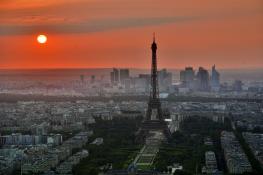Europe

Europe Overview
Europe is the planet's second-most modest landmass by surface zone, blanket something like 10,180,000 square kilometers or 2% of the Earth's surface and something like 6.8% of its territory region. Of Europe's give or take 50 nations, Russia is far and away from the biggest by both zone and populace, consuming 40% of the mainland, while Vatican City is the most modest. Europe is the third-generally crowded landmass after Asia and Africa, with a populace of 733 million or around the range of 11% of the planet's population.
Europe, specifically Ancient Greece, is the origination of Western culture. It assumed an overwhelming part in worldwide undertakings from the fifteenth century onwards, particularly after the start of pioneering different fields. Between the sixteenth and twentieth centuries; European countries regulated at different times the Americas, the greater part of Africa, Oceania, and substantial divides of Asia.
Europe Tourism and Geographical limitations
Europe is currently ordinarily characterized by geographers as the westernmost promontory of Eurasia, with its limits stamped by substantial waterways to the north, west, and south; Europe's cutoff points to the far east are normally taken to be the Urals, the Ural River, and the Caspian Sea; to the southeast, incorporating the Caucasus Mountains, the Black Sea and the conduits associating the Black Sea to the Mediterranean Sea. Because of sociopolitical and social distinctions, there are different depictions of Europe's border. For instance, Cyprus is rough to Anatolia, however, it is, as a rule, acknowledged part of Europe both socially and politically and as of now is a partial state of the EU.
At times, the statement "Europe" is utilized as a part of a geopolitically constraining way to allude just to the European Union or, more only, a socially characterized center. Then again, the Council of Europe has 47 part nations, and just 28 part states are in Europe. Moreover, individuals living in ranges, for example, Ireland, the United Kingdom, the North Atlantic and Mediterranean islands and likewise in Scandinavia might routinely allude to "mainland" or "territory" Europe essentially as Europe or "the Continent".
Demographic and culture
Today, extensive populaces of European plunge are discovered on each landmass. European family prevails in North America, and to a lesser degree in South America. Australia and New Zealand have vast European determined populaces. Africa has no nations with European-determined larger parts (or with the special case of Cape Verde and most likely Sao Tome and Principe, contingent upon connection), however, there are critical minorities, for example, the White South Africans. In Asia, European-inferred populaces prevail in Northern Asia, a few parts of Northern Kazakhstan and Israel.
Multi-ethnic qualities
Additionally, transcontinental and geologically Asian nations, for example, Armenia, Georgia, Azerbaijan, Turkey, and Cyprus have populaces generally nearly identified with Europeans, with respectable hereditary and social proclivity. The society of Europe could be portrayed as an arrangement of covering societies; social blends exist over the landmass. There are social advancements and developments, once in a while conflicting with one another. In this manner, the inquiry of "regular society" or "normal qualities" is a matter of discussion and debate.